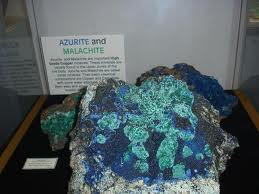

The earth is indeed an amazing and perfect place to live. It has the things that are necessary for us to survive. It provides with the enough resources for our needs. There is no place like earth. Humans are the highest level of organism living on this planet. We are even termed as the stewards of this place. Although plants and animals are also considered as living organisms, humans are given the chance and the will to utilize the natural resources that can be found on earth.
These natural resources include plants, wood and minerals. Metal is one of the oldest minerals on this planet. It has been used in different reasons. During the early civilizations metal has been used as a weapon. It is very much known for its hardness and durability.
Most of the people nowadays are confused about the properties and functions of metal. Metal is not just actually iron. There are different types of metals that can be found on the surface of the earth and even on its inner core. The different types of metals have their own characteristics and properties.
The most expensive type of metal is gold. Gold has been one of the finest materials used in making jewelries. Gold has become the sign of wealth for most of the people. It could be found on the crust of the earth. The process of extracting gold from ordinary rocks is very difficult. It would take time before you can have it as jewelry. During the early periods the main significance of gold is for decoration. Gold is also very popular to be the most malleable of all the metals.
Next to the value of gold is silver. Silver has been also used as a form of jewelry. It can be made into anklets, bracelets, earrings, necklaces and rings. However unlike gold, silver has a lower value in terms of money. The presence of silver rarely occurs, however it is the most active of all the metals. You will know more about the properties of metals using a periodic table.
The third and unusual type of metal is mercury. It is the only metal that can be found on the earth which is purely liquid at a room temperature. Mercury has been noted to be the most dangerous type of all metals. The main process used to extract mercury is through distillation. It is also used during the extraction of gold because of its capacity to attract gold.
The last type of metal is iron. Iron became synonymous of metal for some individuals. It is because they thought that the main property of characteristics of metal is its hardness. Iron is the most useful and valuable type of metal. It is often used to create nails, construction equipments and railings. Iron is very versatile in terms of making things out of it because of its malleability. The history of metallurgy can be fully traced using the periodic table of elements. It will provide you the basic knowledge about how metals became useful to humans.
www.made-from-india.com maintains a database for Metals Products manufacturers, exporters, suppliers, importers and wholesalers of mineral & metal products. This consists of asbestos & asbestos products, aluminum, aluminum products, copper & copper products, diamonds-polished, ferroalloy & products, iron & steel castings, iron & steel products, lead & lead products, magnetic materials, metal waste, mining machinery, wire mesh, wire ropes and zinc & zinc products, copper mineral, aluminum mineral, mineral properties, titanium mineral, mineral gemstones, industry metals, Mineral & metals buyers, mineral & metals seller, global minerals and metals, etc.



